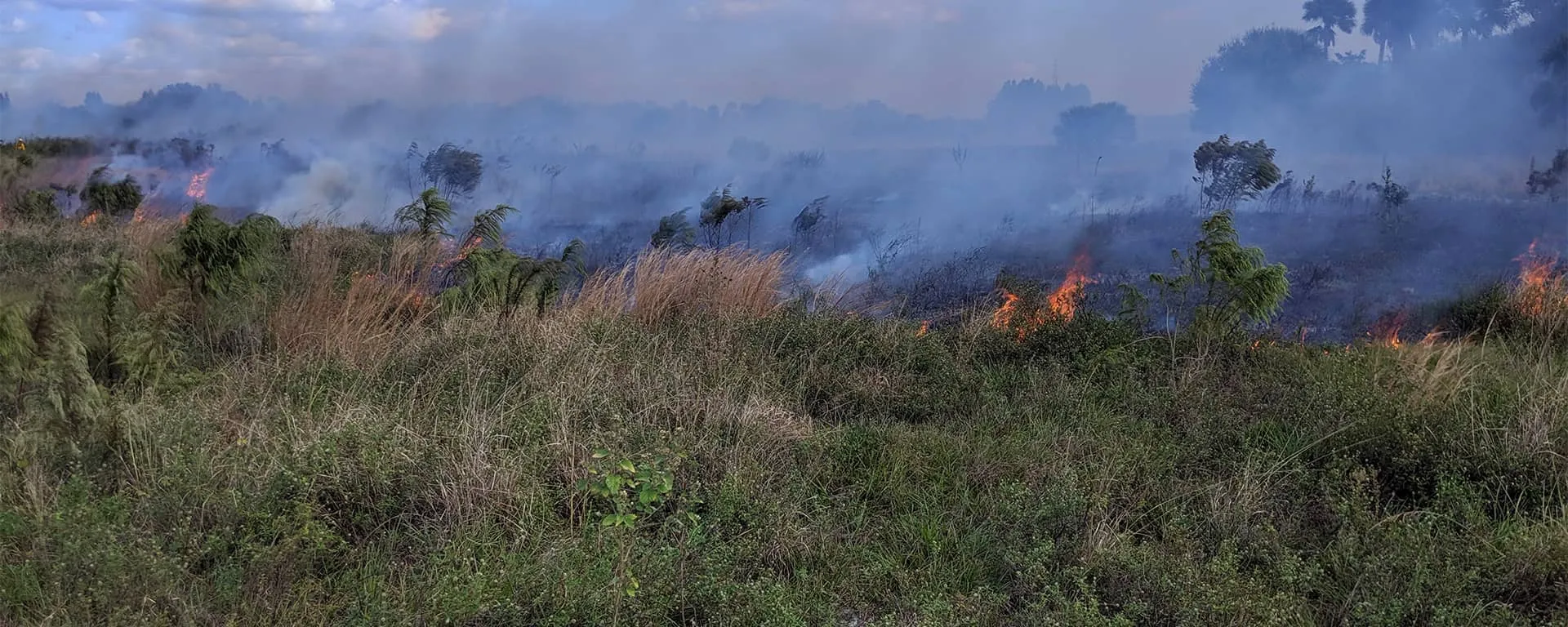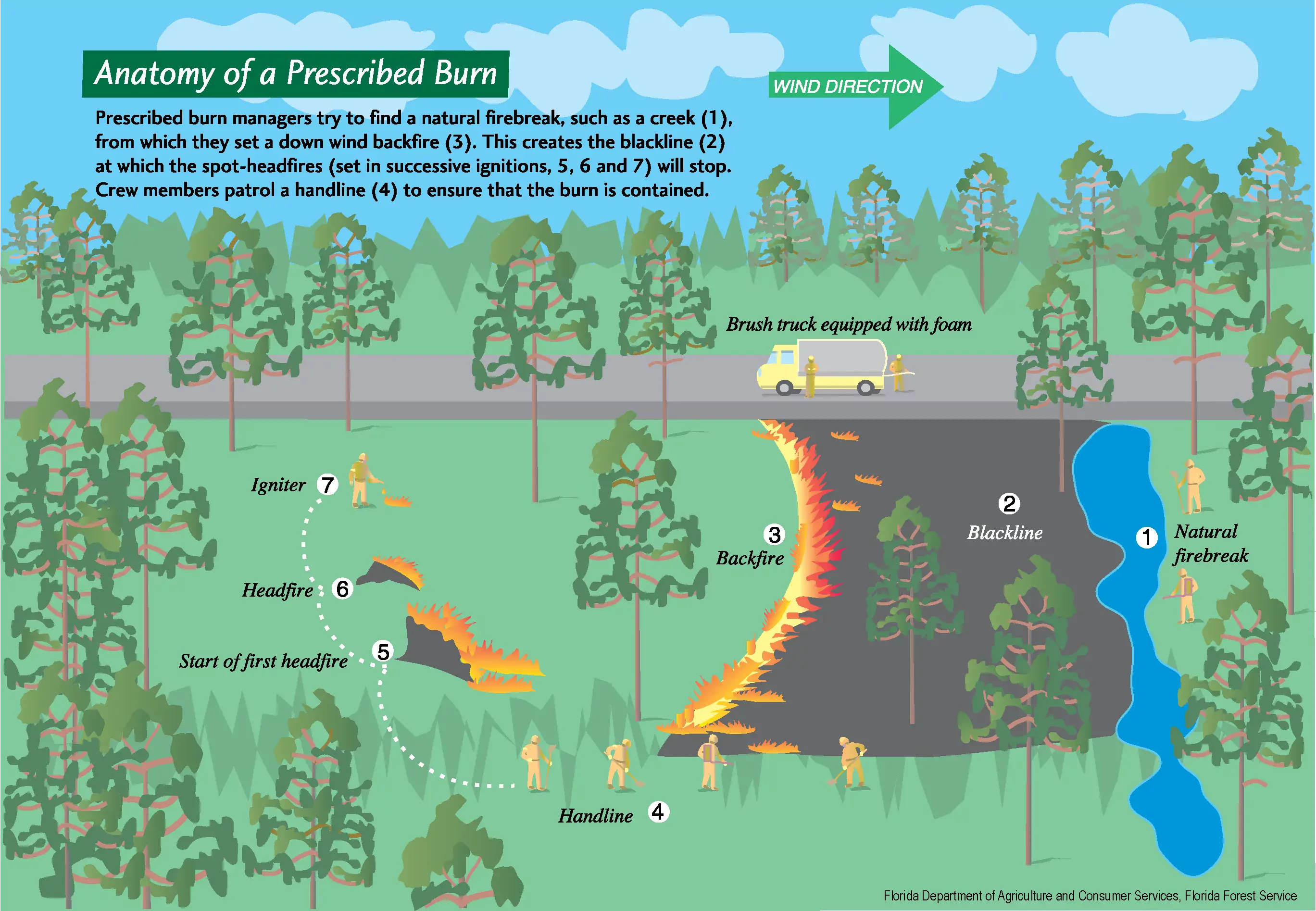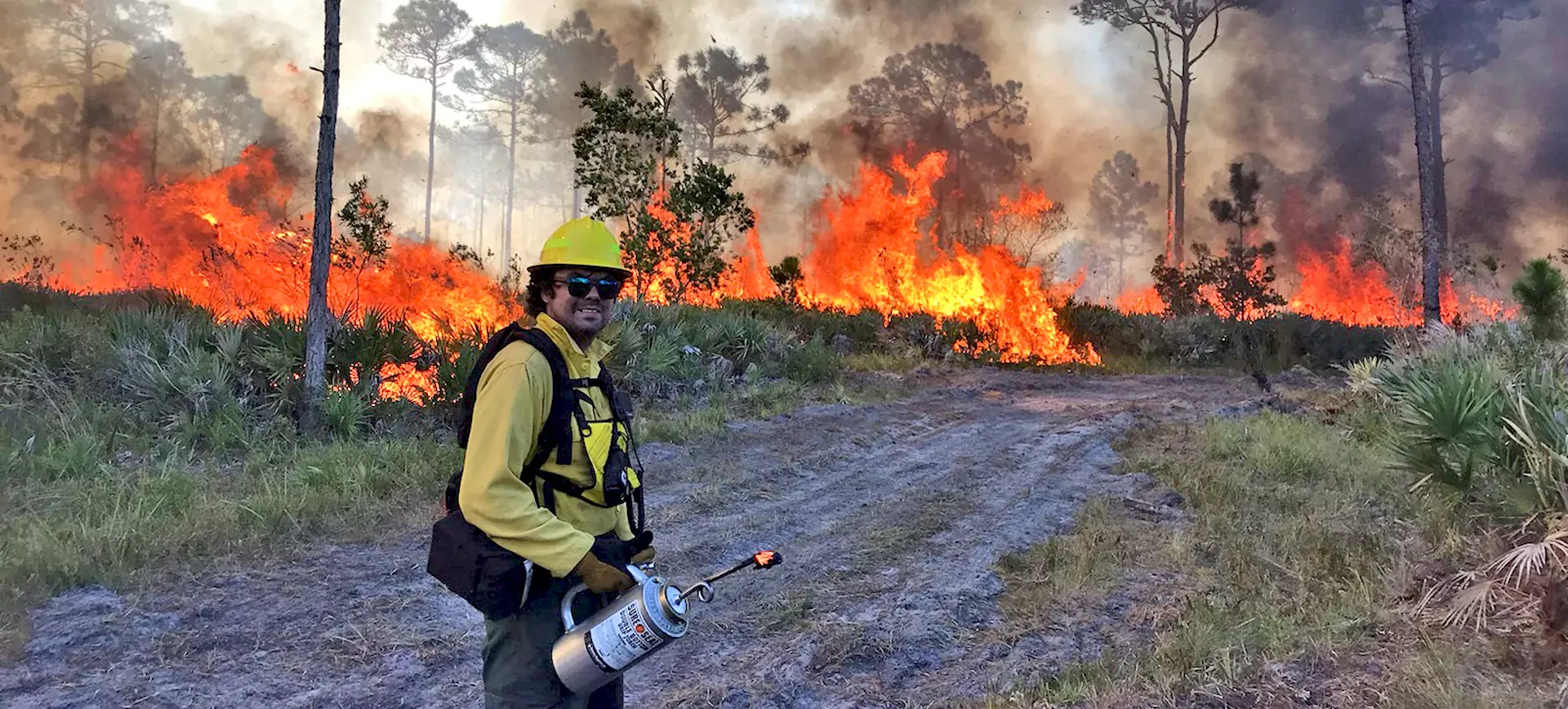Natural Areas Depend on Fire
Nature has a way of balancing itself. For forests and natural areas, this occurs through periodic fire. Forests, especially pine flatwoods and scrub habitats, depend on fire to keep them healthy and to promote new growth and biodiversity.
How does fire impact forests?
- Removes underbrush and overgrown plants and trees to allow sunlight to reach the forest floor
- Eliminates diseased vegetation
- Rejuvenates soil by returning trapped nutrients back into the earth
In return, how do these impacts benefit forests?
- Encourages new growth of native vegetation
- Increases the quantity and quality of water since fewer competing plants are absorbing water
- Enhances vegetative diversity and assists in growth of endangered plant species
- Improves the wildlife habitat and provides better access to food for foraging animals
A Need for Control
Though forest fires are a natural occurrence that ultimately promote a healthier ecosystem, excessive amounts of fire can be quite dangerous and destructive. During dry periods, dense vegetation and underbrush are at risk of catching fire. Wildfires can spread rapidly, destroying anything in its path and creating smoke that is dangerous to our health and communities.
However, with just the right amount of controlled fire under the appropriate conditions, we can manage underbrush and prevent wildfire, while reaping other benefits as well. In consequence, prescribed burns are necessary.



